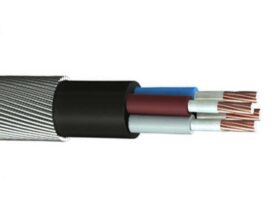Comparing power cables and control cables in terms of which is better is not a straightforward question. The suitability of power cables or control cables depends on the specific application and the requirements of the system. Both types of cables serve different purposes and have distinct characteristics. Let’s explore the key differences and considerations for each type:
Power Cables: Power cables are primarily designed for transmitting electrical power from a power source to various electrical loads. They are used for high voltage and current applications and are typically installed in power distribution networks, industrial settings, and residential buildings. Here are some key features and considerations for power cables:
- Capacity: Power cables are designed to handle high voltage and current levels, making them suitable for transmitting large amounts of power over long distances.
- Insulation: Power cables have thick insulation to withstand high voltage levels and provide electrical insulation between conductors and the surrounding environment.
- Conductors: Power cables generally have larger-sized conductors to carry higher currents and minimize power losses.
- Protection: Power cables are often designed with additional layers of protective sheathing to resist mechanical damage, moisture, chemicals, and environmental factors.
Control Cables: Control cables are specifically used for transmitting control signals, data, and low-power electrical signals within control systems. They are commonly employed in industrial automation, machinery, and instrumentation applications. Here are some key features and considerations for control cables:
- Flexibility: Control cables are typically more flexible, allowing for easy installation and maneuverability in tight spaces or moving parts.
- Shielding: Control cables often feature shielding to protect against electromagnetic interference (EMI) and ensure signal integrity, especially in environments with high electrical noise.
- Number of Conductors: Control cables usually have a lower number of conductors compared to power cables since they are primarily used for transmitting control signals rather than power.
- Insulation: Control cables have insulation suitable for low voltage and signal transmission, but not necessarily designed for high-voltage power distribution.
Choosing between Power Cables and Control Cables: The selection between power cables and control cables depends on the specific requirements of the application. In most cases, power cables are essential for transmitting high power to electrical loads, while control cables are crucial for transmitting low-power control signals within control systems. Both types of cables are designed to serve their respective purposes effectively.
It’s important to consult with electrical engineers or professionals who can assess the requirements of the system and provide guidance on selecting the appropriate cables based on factors such as voltage levels, current ratings, environmental conditions, and signal integrity considerations.
In conclusion, rather than comparing which type of cable is better, it is more important to understand their distinct purposes and select the appropriate cable based on the specific application and system requirements.











Leave a Reply